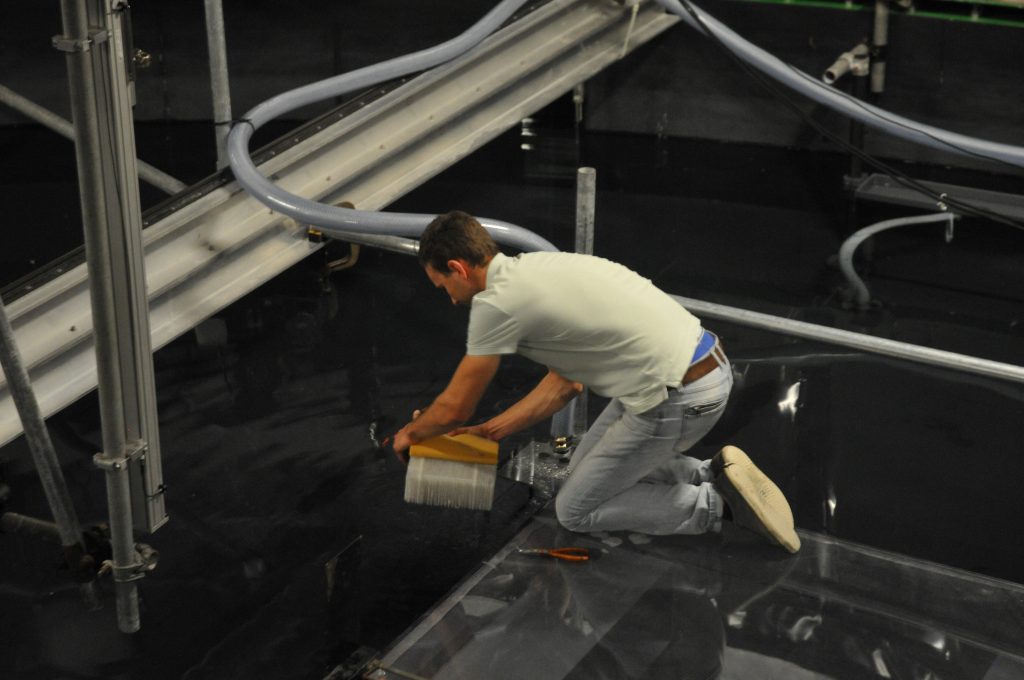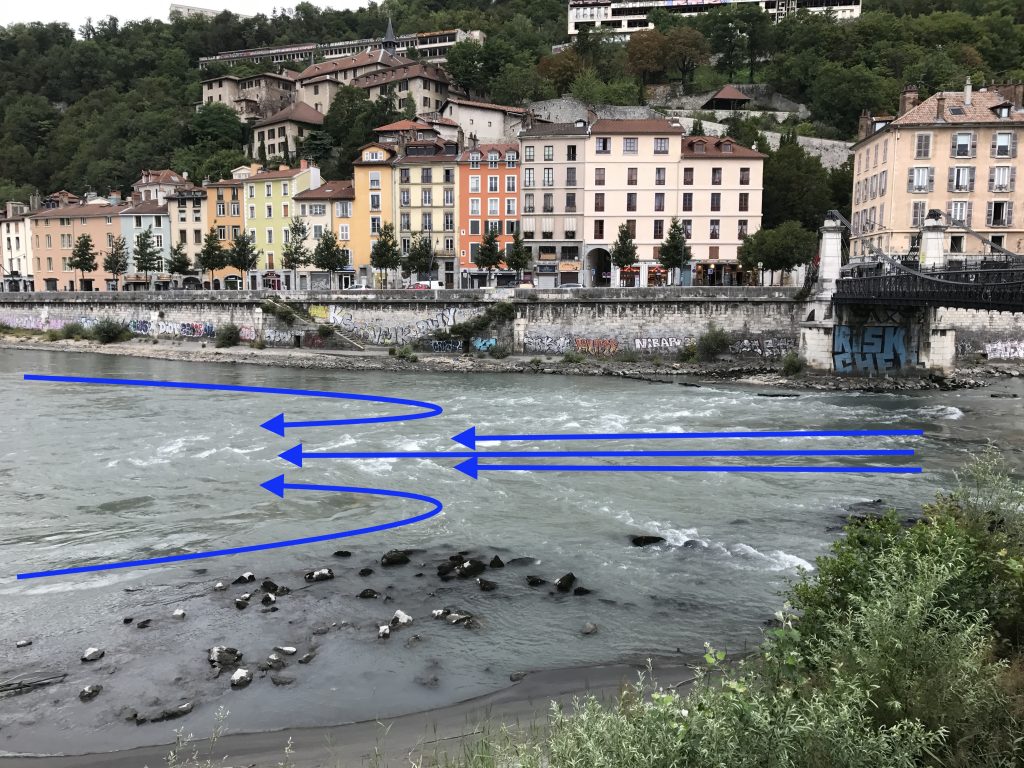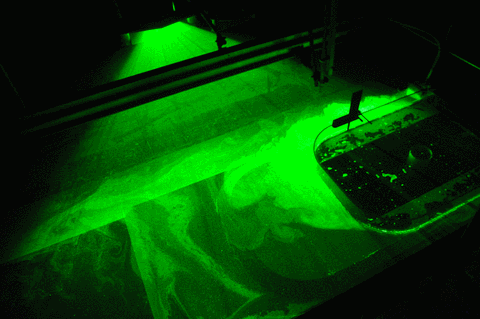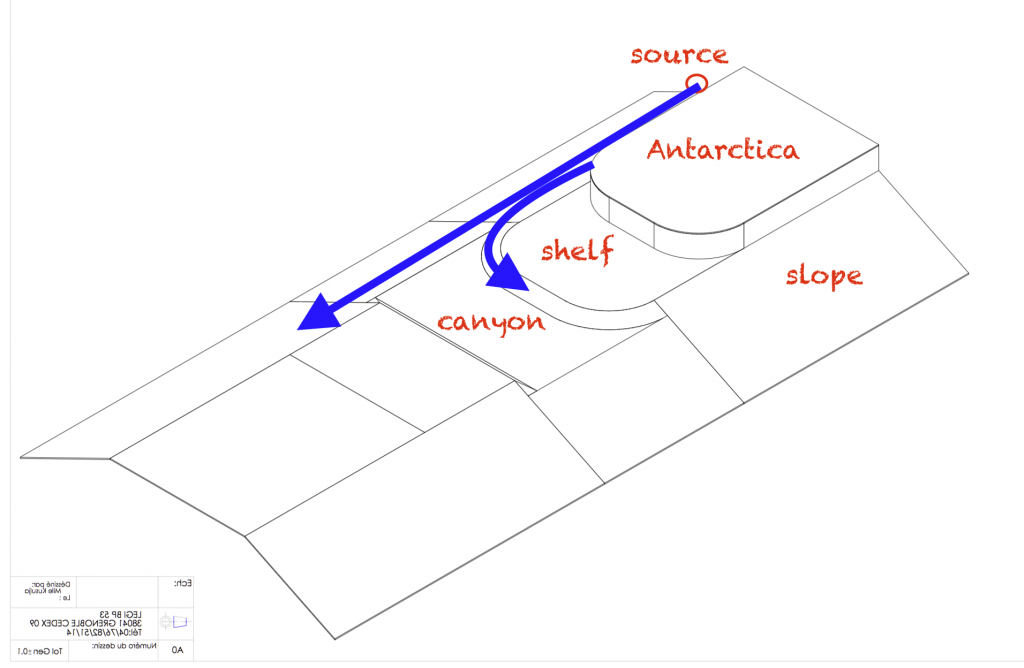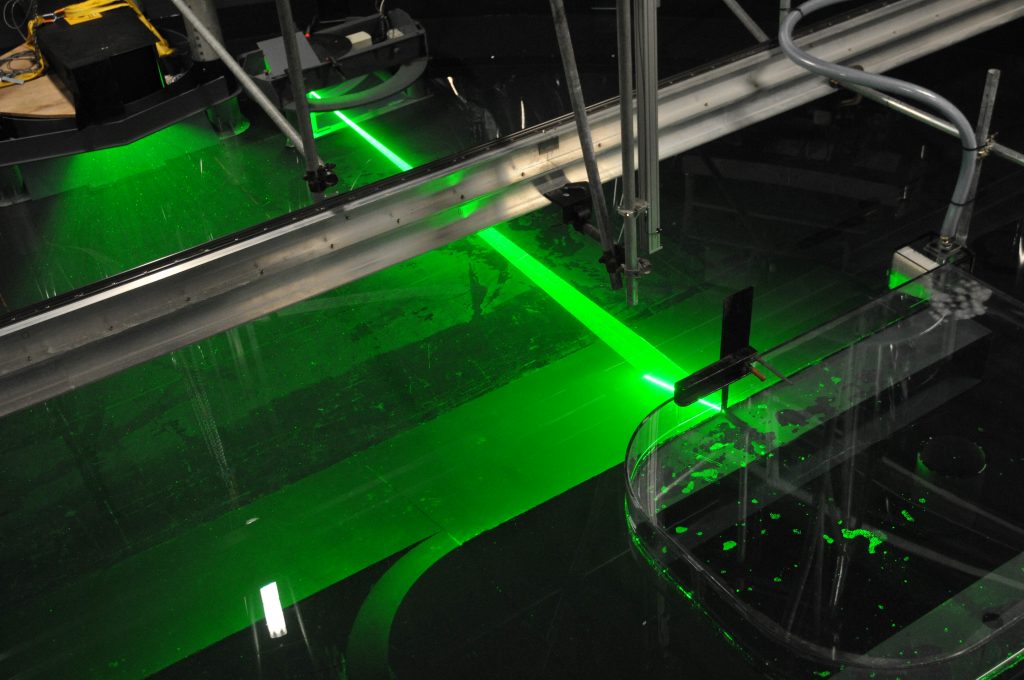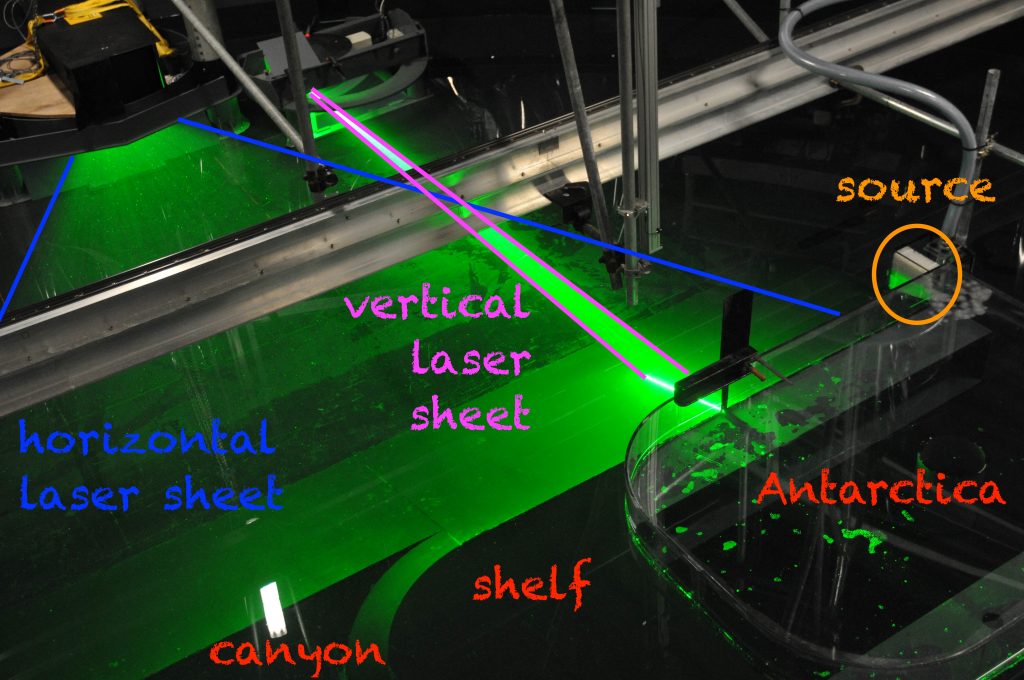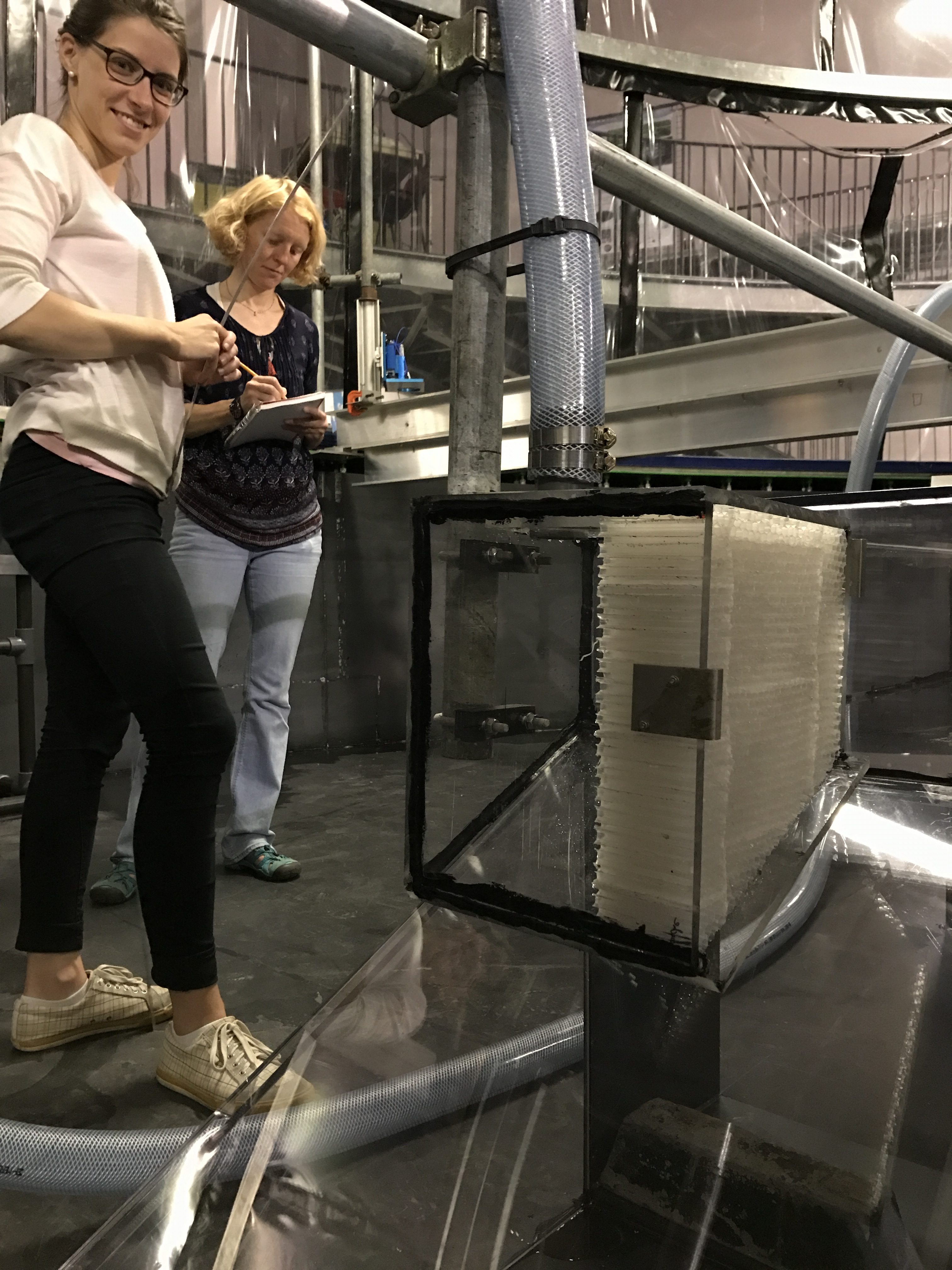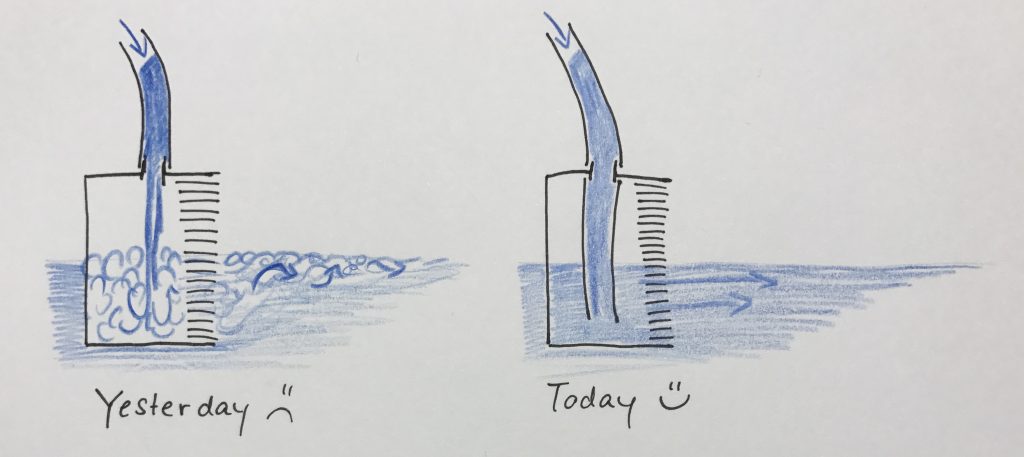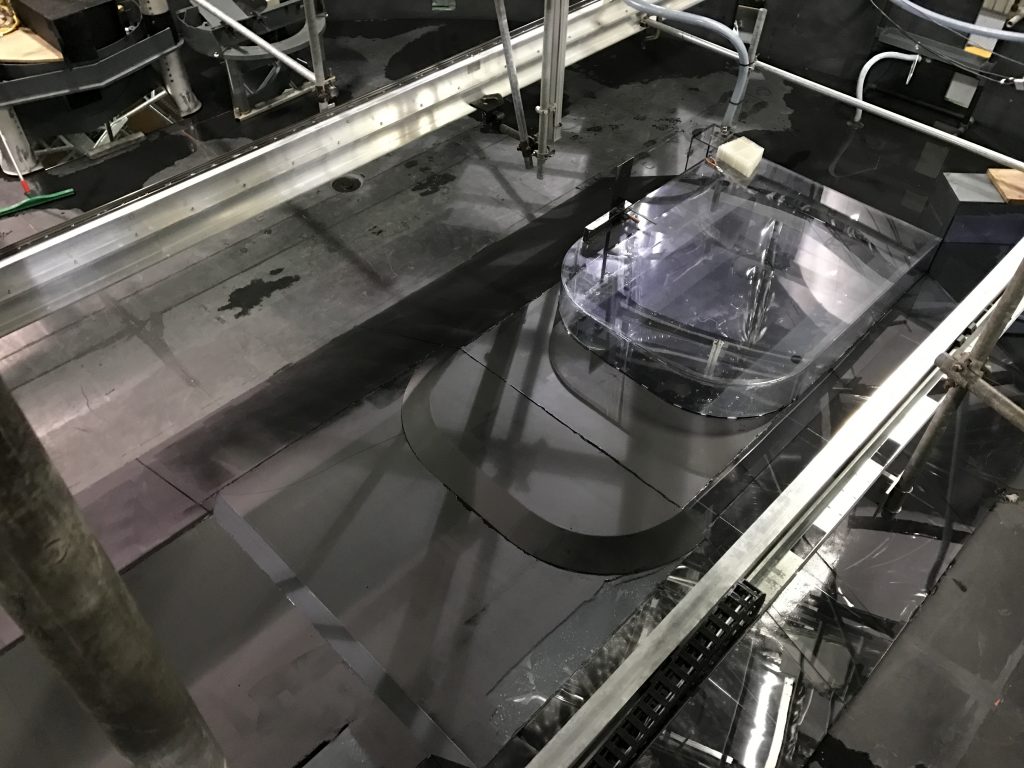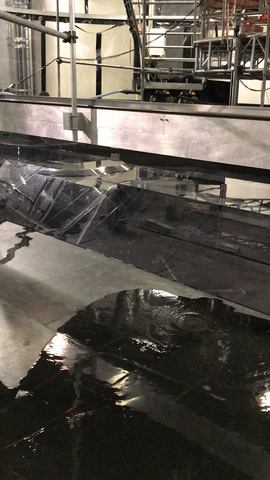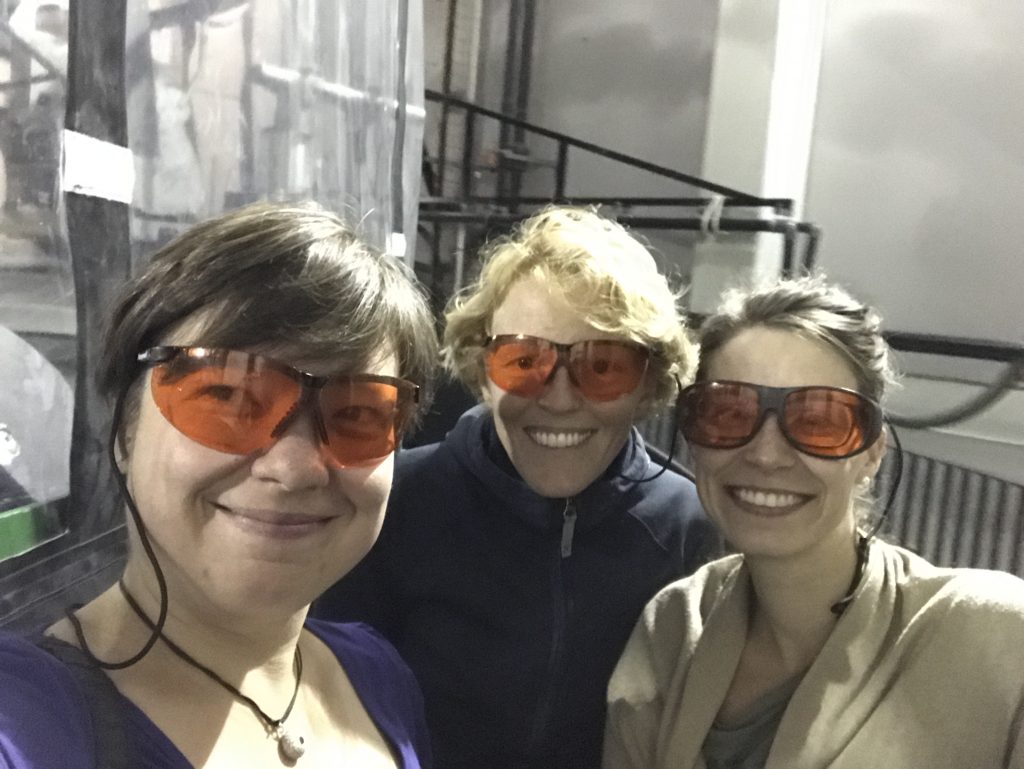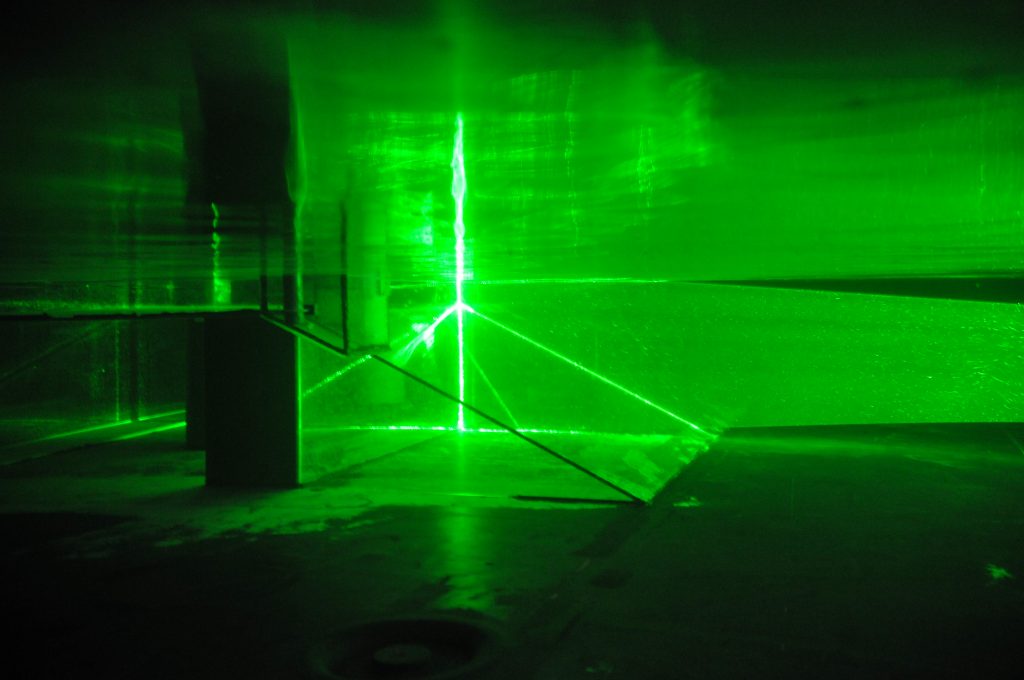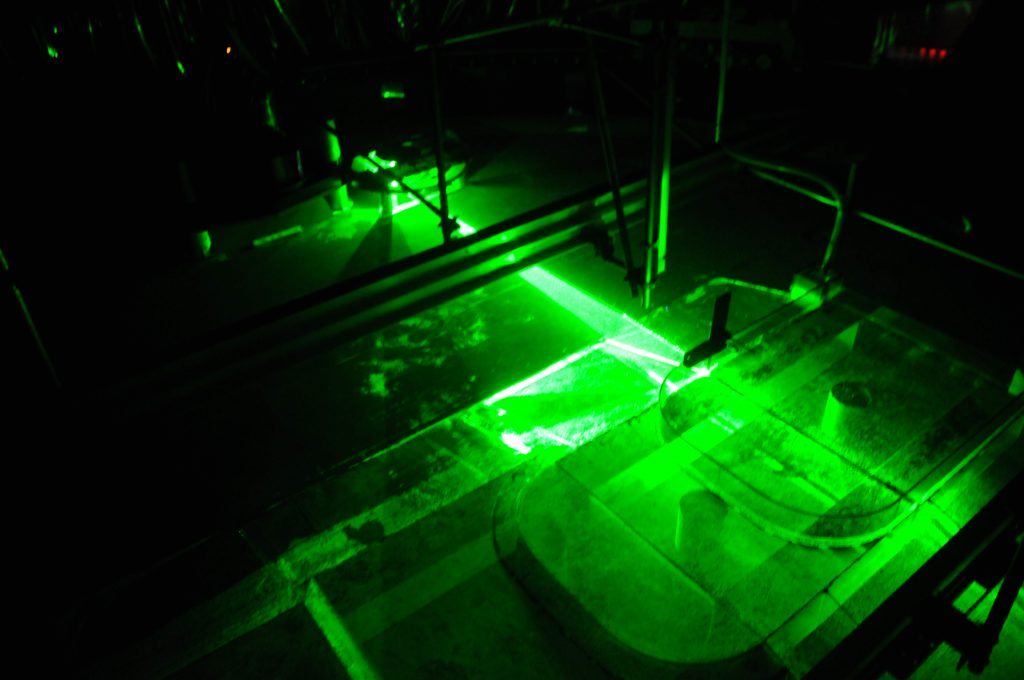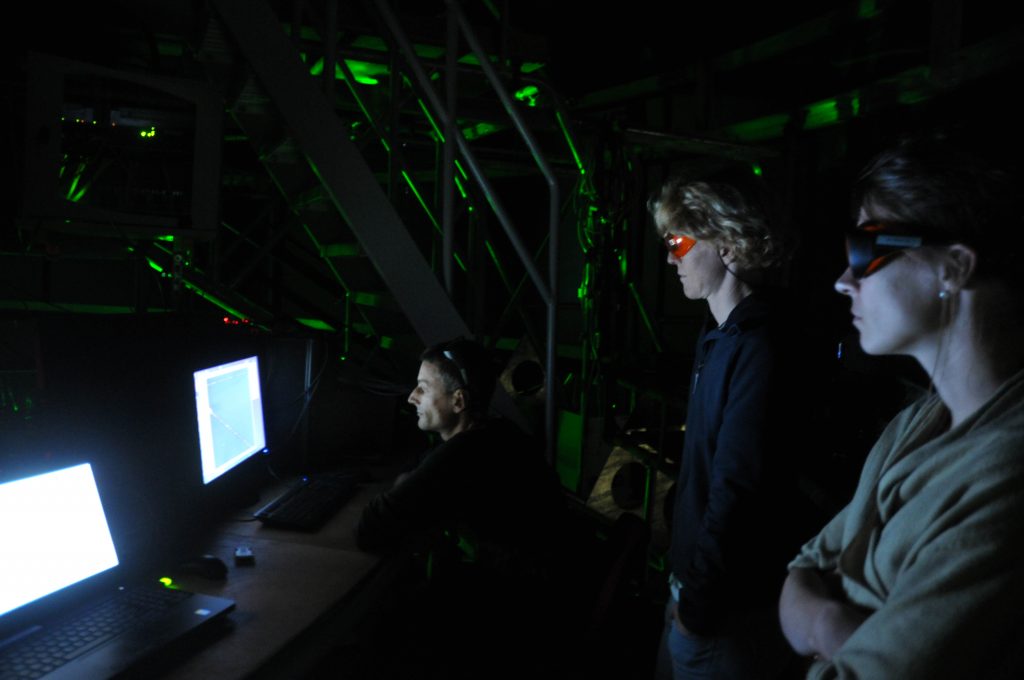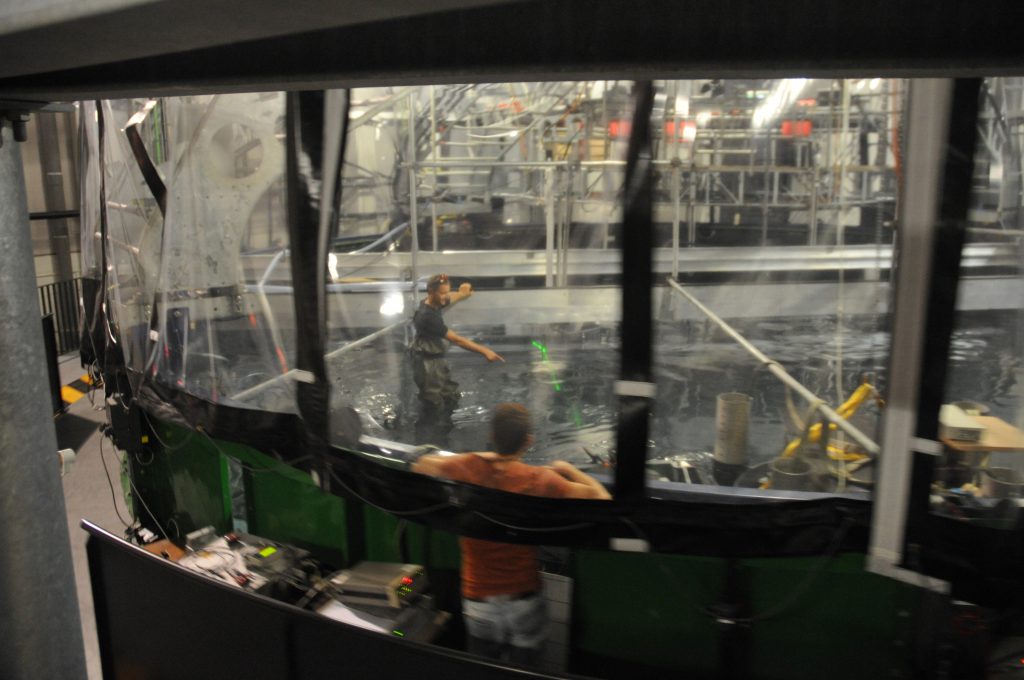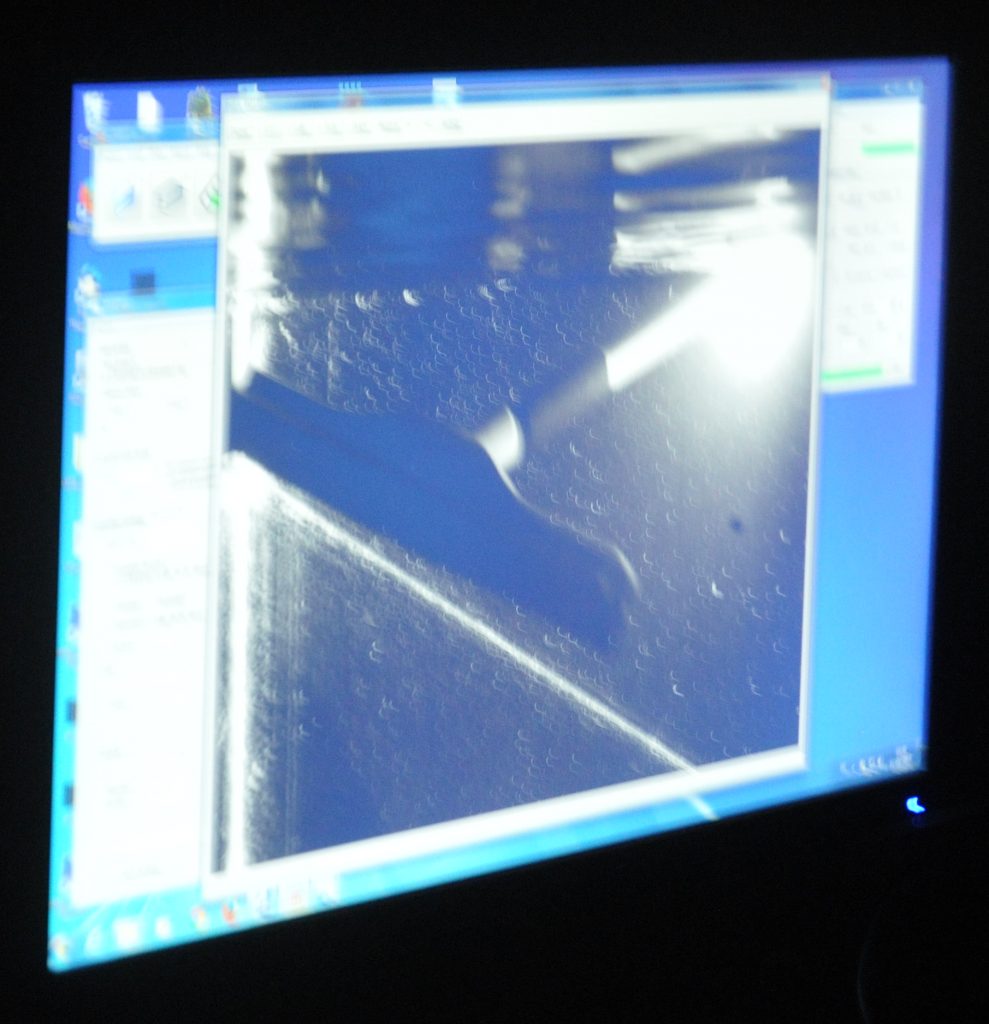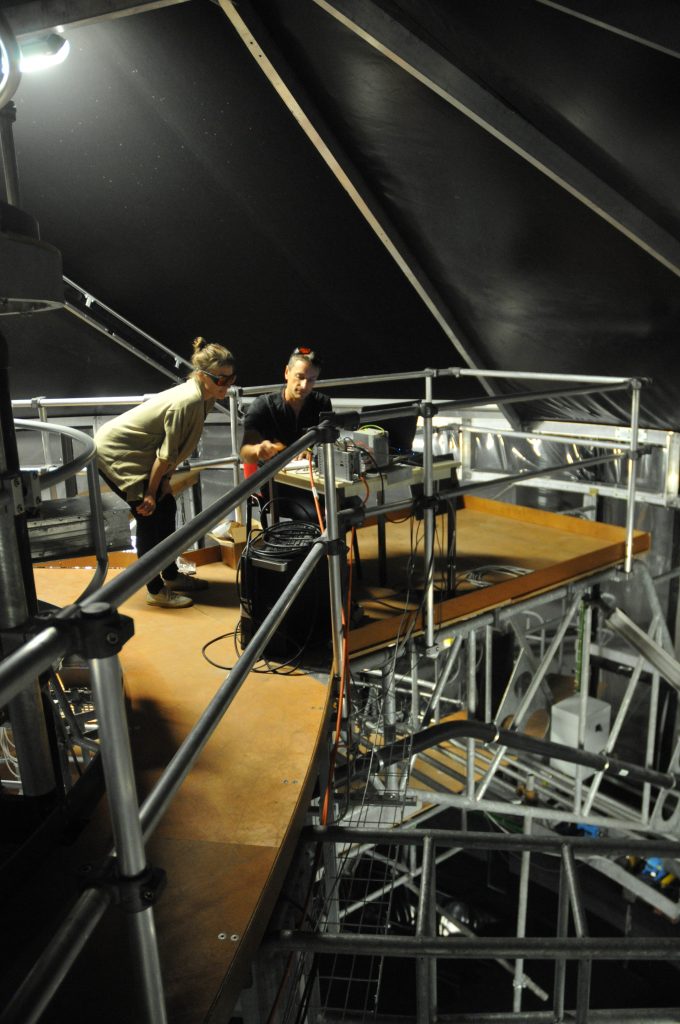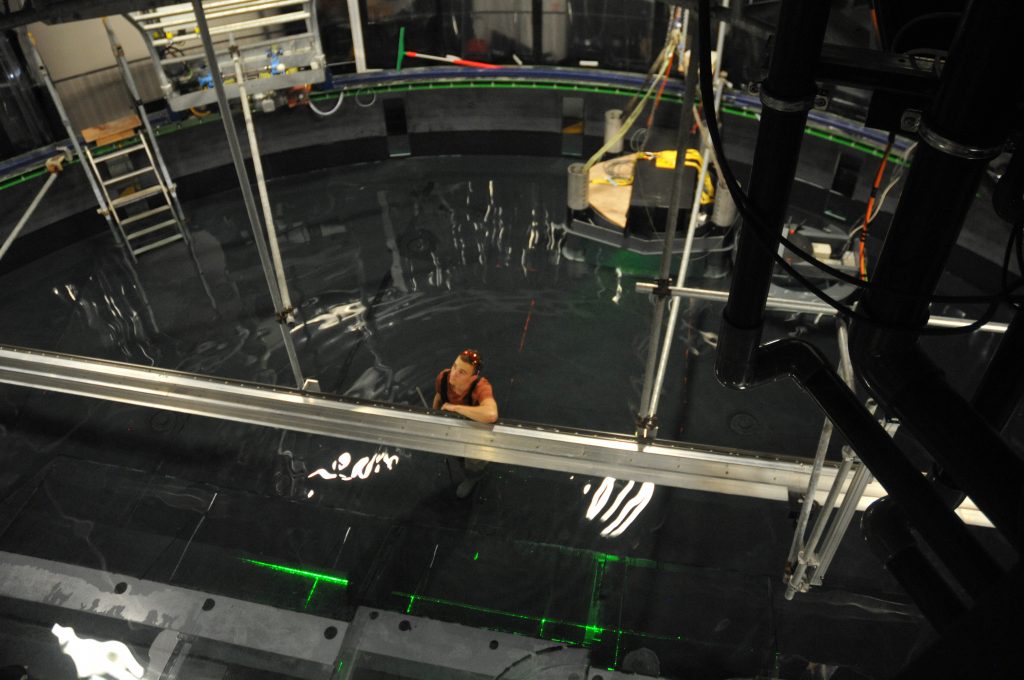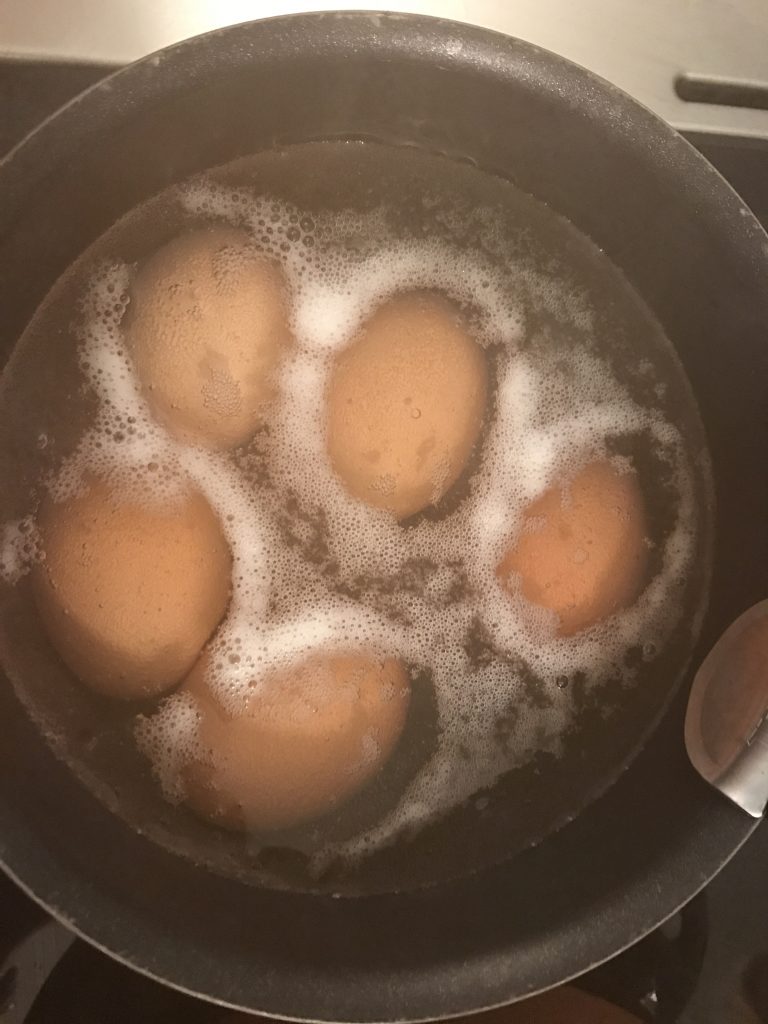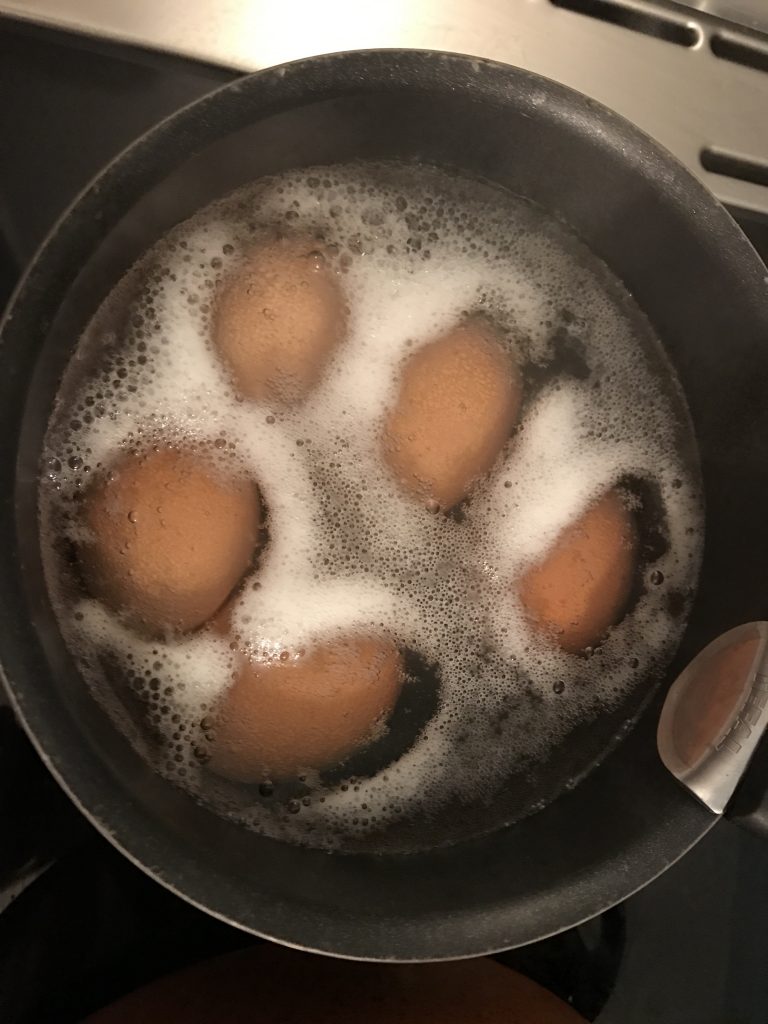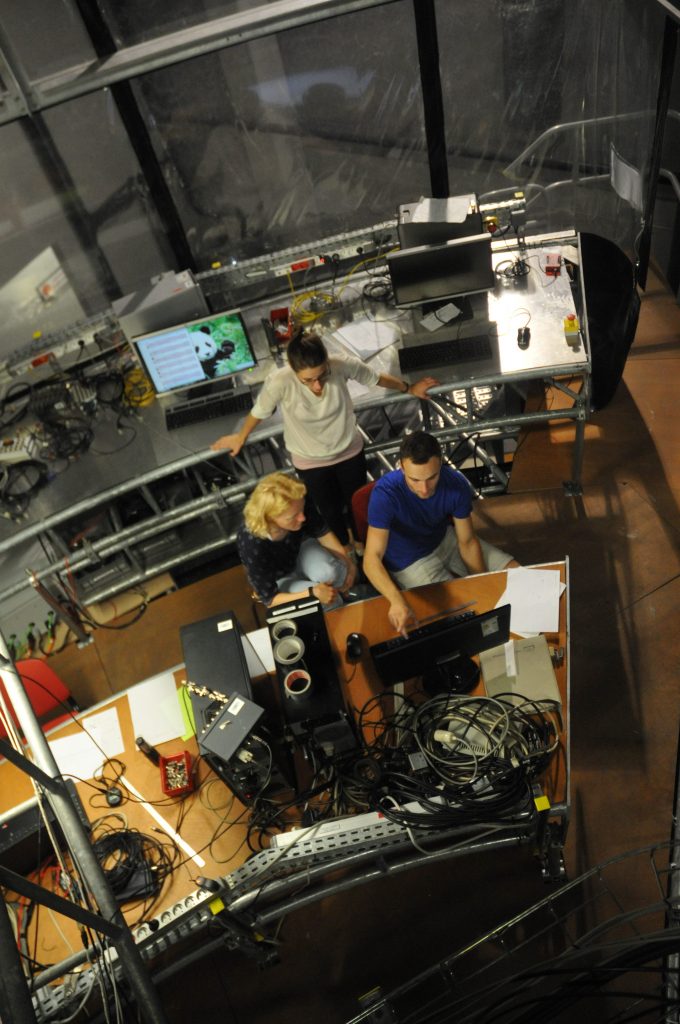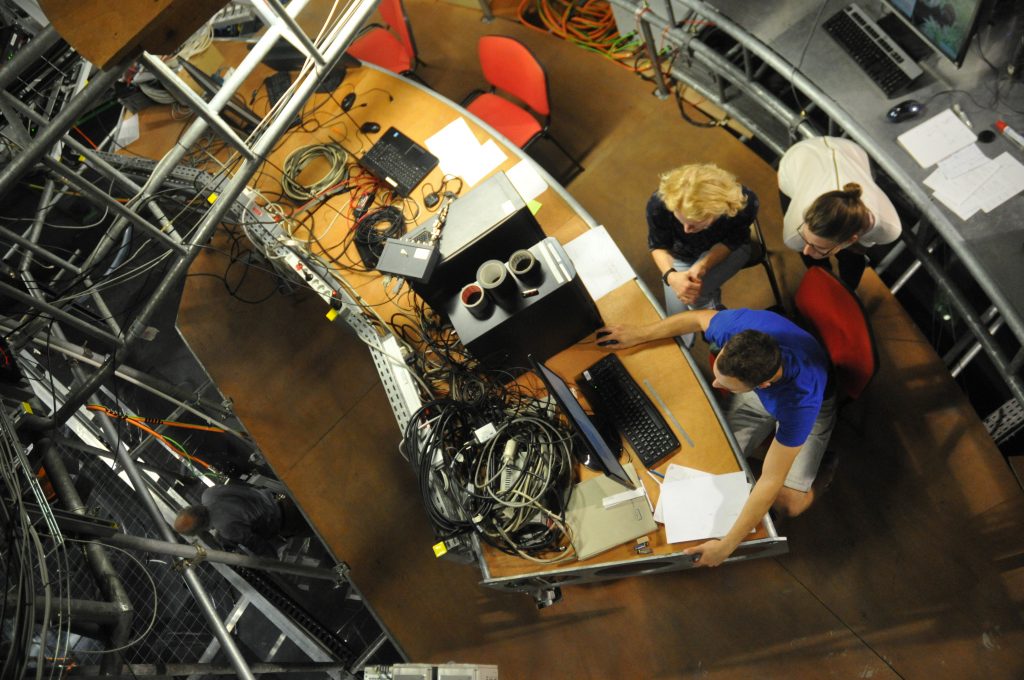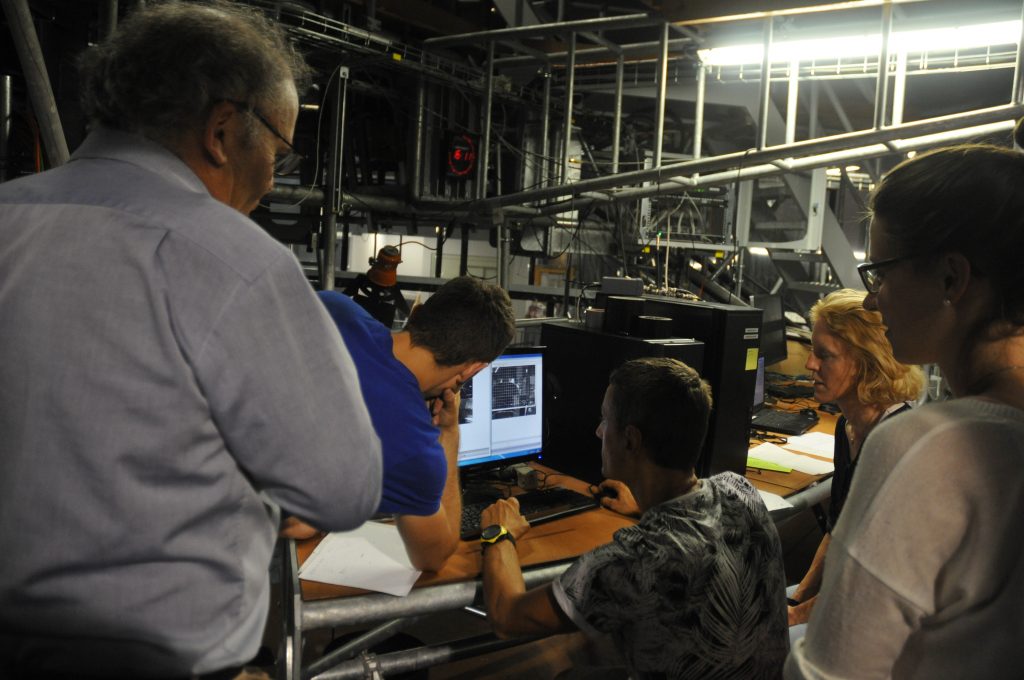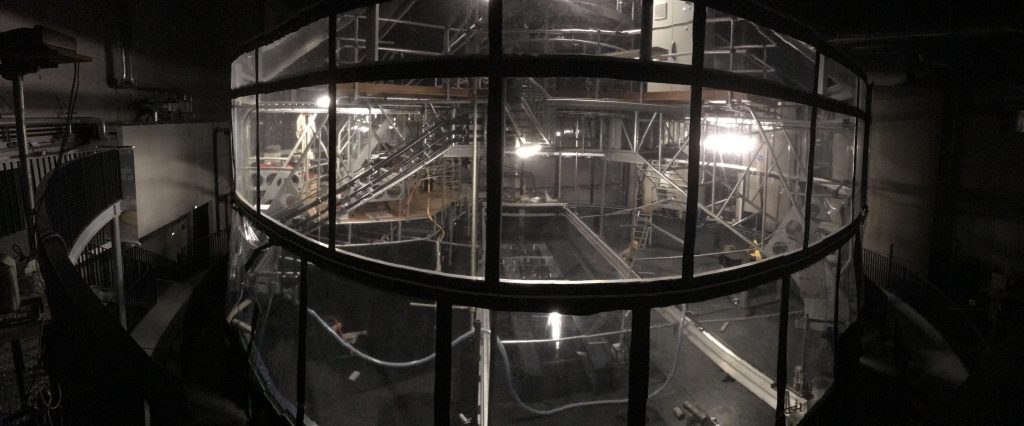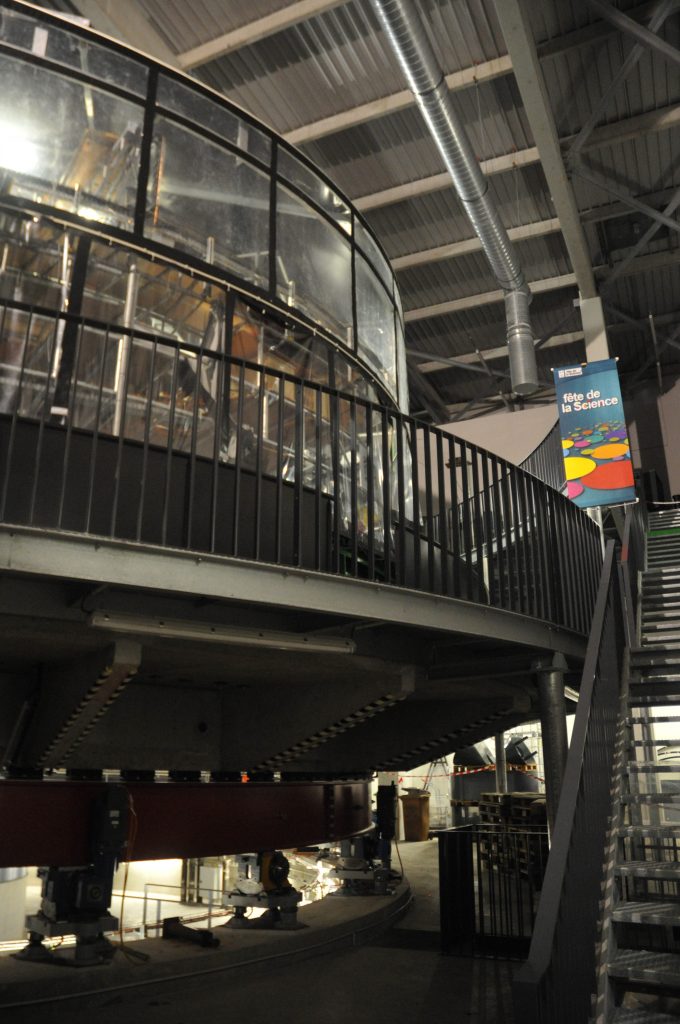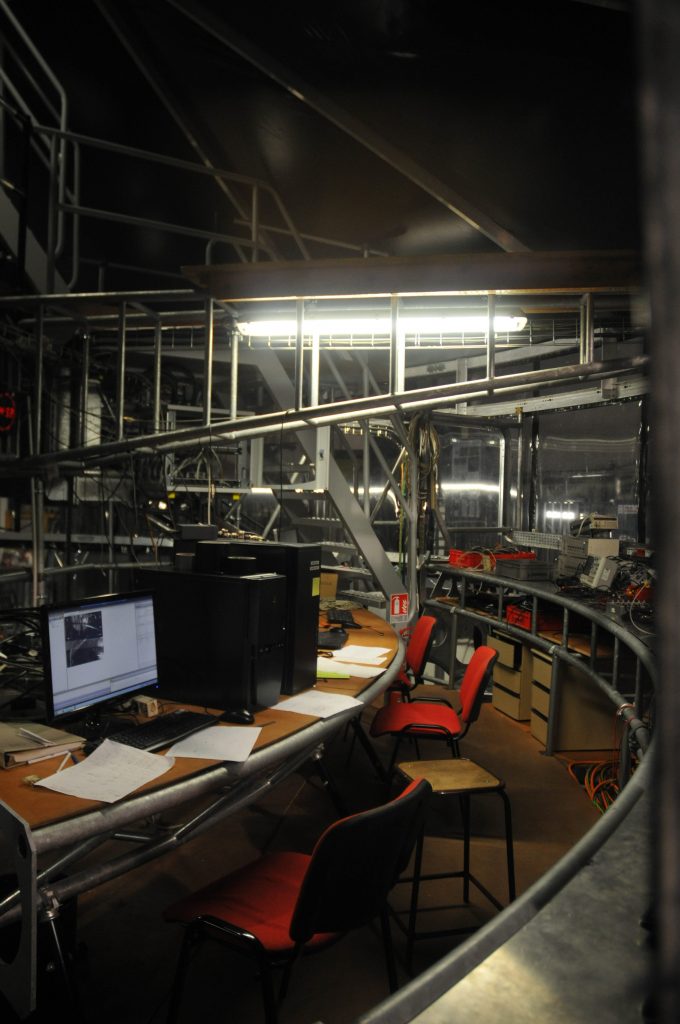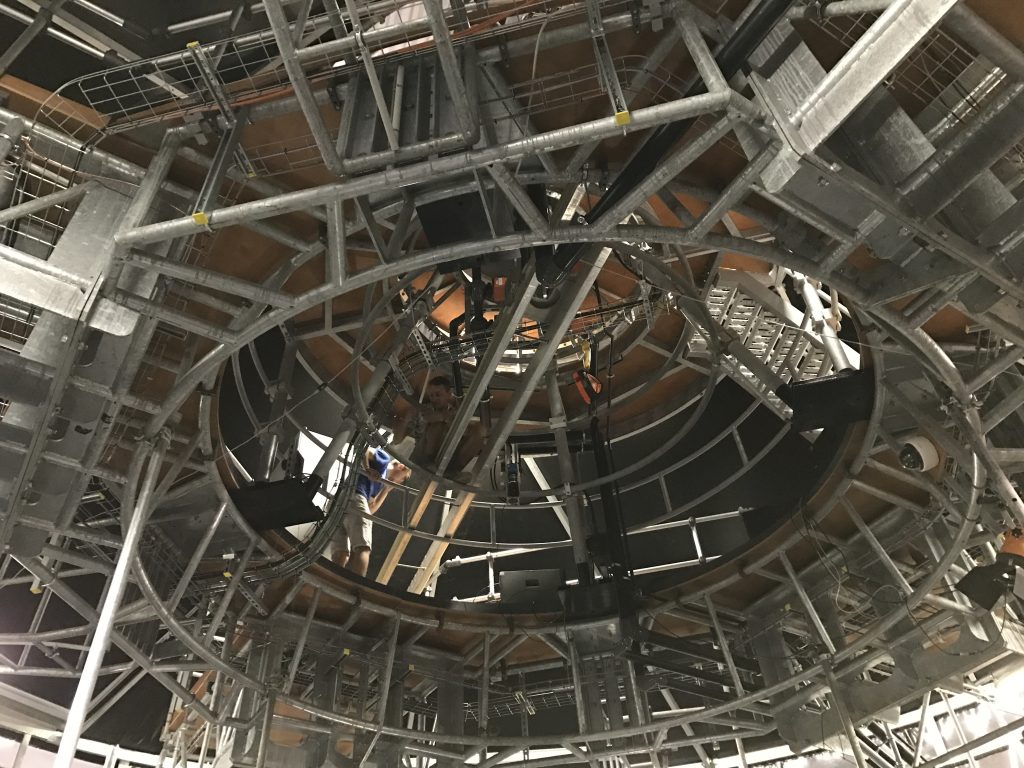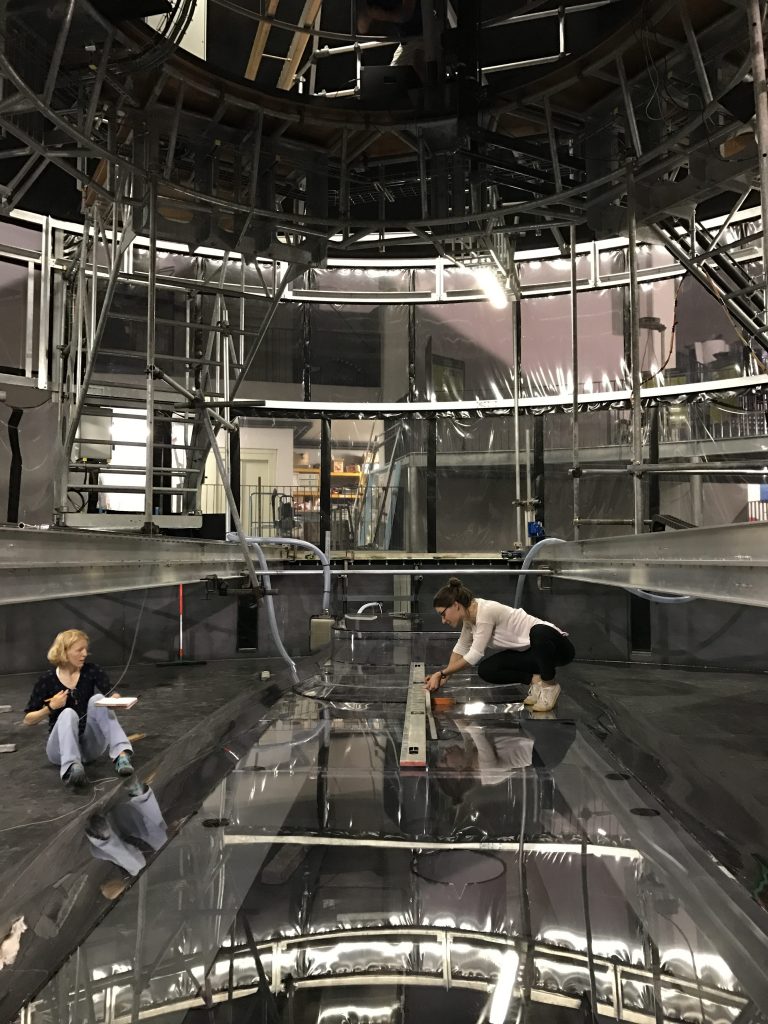Just a quick update from the lab tonight: We are fixing more bugs by the hour :-)
First: the bubble-free source.
I have previously written about how we thought we were going to get our source bubble-free (link here). Turns out, it’s not quite as easy as we thought — there were still plenty of bubbles everywhere! But luckily, Thomas came to our rescue and put some foam inside the source so the water has to pass through there before leaving the source through the honeycomb. That effectively gets rid of all the bubbles since they just don’t fit through and surface inside the source box instead of outside of it in our experiment. We were really concerned about all those bubbles for two reasons: A) They might show up in the pictures we want to analyse and destroy any correlations we are hoping to find since they are there one second and then burst and disappear the next. And B) since the bubbles left the source below water level, they popped up to the surface and introduced vertical flow where we really didn’t want it.
But anyway, the bubbles are gone now! It’s amazing how well that works and all our (ok, my) prophecies of doom (the water is never to go through the foam! It is going over it and then enter the tank as a water fall! And even if it does go through, the particles we need to visualize the flow with, won’t!) were completely unnecessary.
Second: The unwanted water jet pump.
We don’t actually know where it happened, but somewhere there was a leak and air got pulled into our inflow. Thomas and Samuel fixed this problem, too, but this is what happened: We have quite a fast flow from a reservoir sitting high above the tank down to the source. The faster the flow, the lower the pressure in it, which means that it sucks stuff (in our case air) from the surroundings, and entrains it. And that’s exactly the effect that is used in water jet pumps, except there people want it to happen…
Below you see an example of the Isère here in Grenoble, where a rather fast flow is causing a return flow as soon as the river bed widens a little.
Anyway, now it’s almost dinner time in our shared flat. But we’ll be back tomorrow with first results from our experiments! :-)
